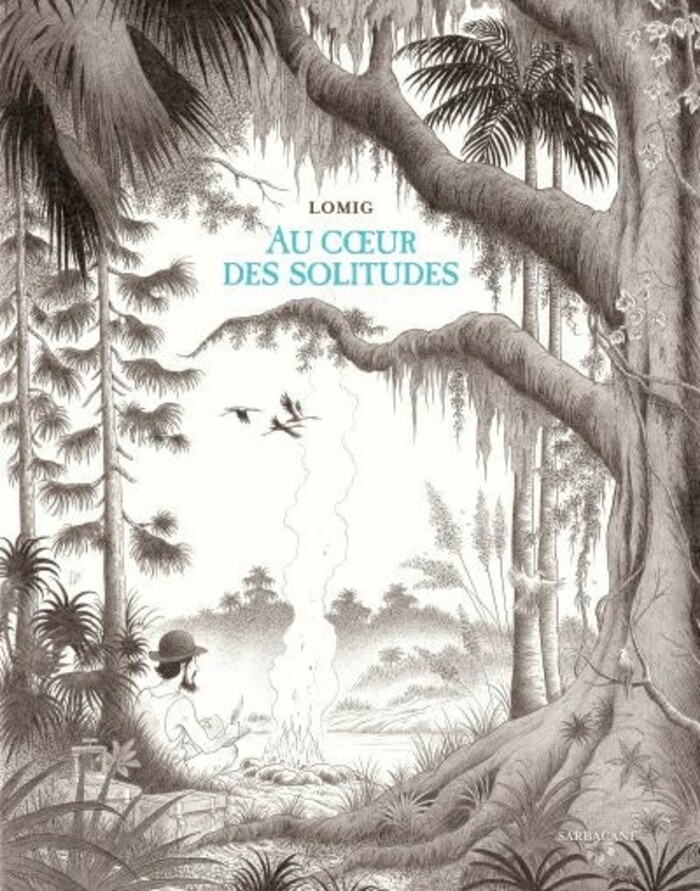Wild Moment: Hendrik Bolz
"And into the forest I go, to lose my mind and find my soul..." Trust Member Hendrik reviews a gorgeous French graphic novel about John Muir on the eve of 'John Muir Day' (an annual celebration of Muir's birthday 21 April 1838).

Au cœur des solitudes by Lomig
This beautiful graphic novel about the life of John Muir begins in darkness. We find John Muir recovering in an Indiana hospital in 1867, after an accident in a saw mill that almost cost him his vision. He decides to change his way of life and sets out for an epic journey on foot from Jefferson City across the Southeast of the United States to Florida; by boat, via New York, to Cuba; across Panama by train; on to San Francisco by boat again and finally into the Sierra Nevada. He carries nothing but what he needs to survive, plus a magnifying glass and a flower press for his passion, botany.
Lomig intersperses Muir's journey with glimpses of his childhood in Wisconsin and Scotland and of his talent for inventing novel machines, before ending with his arrival in Yosemite Valley in 1869 - basically covering the first half of John Muir's life.
As we accompany Muir on his journey, we learn about his fascination for botany, his awe for the grand landscapes he traverses, and his first thoughts about the finiteness of resources. We see him meet farmers, hunters, ranchers, escaped slaves, plantation owners and 'Indians'*. He develops friendships with Catharine Merrill (who cares for him in the hospital); Magnus Hogson (a saw mill owner in Florida, who cares for him when he is suffering from Malaria); and finally with the Englishman Chilwell who accompanies him in California.
Interestingly, although the graphic novel is mostly about the impression nature has on John Muir, Lomig's drawings are in black (or rather sepia) and white. The style is realistic, and the plants and animals often drawn in fine detail. Although there is not much dialogue, it is not a quick read at 164 pages in big format (24,2 × 31 cm), especially as the drawings beg to be enjoyed in detail.
To prepare for this epic work, the author read John Muir's travel books in the Holt-Atherton archives of Stockton university, California, and the novel is made perfect by a concluding short biography of John Muir by Mike Wurtz, director of said archives, as well as a short bibliography for further reading.
- Au cœur des solitudes by Lomig is published by Éditions Sarbacane, ISBN 978-2-377-31812-4 (in French only at the time of writing)
- This is a longer version of Hendrik Bolz' book review, as featured in the John Muir Trust Journal 76, Spring 2024.
- Inspired to submit your own Wild Moment? Find how here.
*Muir's modern legacy
In Lomig's graphic novel, John Muir does not express anything negative about Native American people. He calls them "Indiens", i.e. "Indians" in the only passage where he meets one (but doesn't interact with him).
The biography by Mike Wurtz following the graphic novel contains one sentence about John Muir and Native American people to put it into perspective. It reads:
"Certaines de ses impressions sur eux sont admiratives, mais d'autres reflètent un malaise qui se manifeste par l'utilisation parcimonieuse d'un langage désobligeant, qui est regrettablement coutumier à cette époque."
Which is roughly translated as:
"Some of his impressions of them are admiring, but others reflect an unease which manifests in the rare use of derogatory language, which was regrettably customary at that time." ["them" being "Natifs américains", i.e. American Natives]
